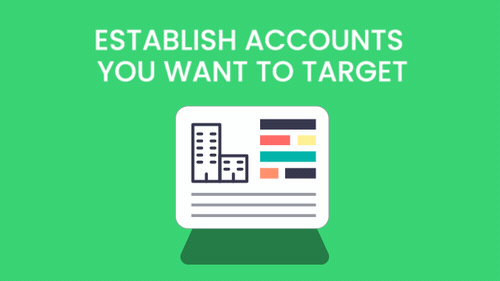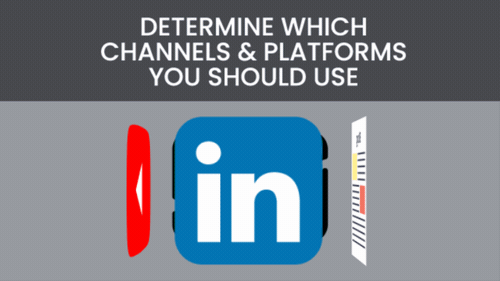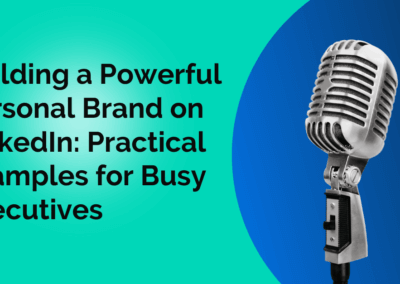If you’re in marketing or sales, odds are you’ve heard of account-based marketing (ABM). It’s a method that’s been gaining popularity in the marketing industry because of its ability to deliver high levels of ROI. In fact, “companies with ABM in place generate 208% more revenue for their marketing efforts,” according to Marketing Profs. This type of marketing involves honing in on a few accounts and targeting them with a highly-personalized strategy.
Although ABM is an excellent tool for any company, small businesses stand to benefit the most. This is because “SMBs can’t afford to scatter their money across various marketing tactics and a huge pool of prospects and just hope to generate enough qualified leads to make a profit,” says Niraj Ranjan Rout, Founder of Hiver. Unlike traditional lead-based marketing, ABM enables small businesses to focus all their resources on a few high-value prospects that are likely to buy.
Besides, small businesses are likely to gain internal buy-in across departments with ABM. It can be pricey due to personalization and a multi-channel approach. With more buy-in across the company, the budget for an ABM program can come from multiple departments.
Sound like something interesting to you? Here’s our account-based marketing guide to get you started:

Develop your ICP
First, you’ll want to develop your Ideal Client Profile (ICP). An ICP is different from a buyer persona because it focuses on a company rather than an individual. It should include firmographic data such as company size, industry, number of employees, and estimated revenue plus unique characteristics such as technologies used, hiring trends, or external industry events. Doing this will help you determine the criteria for your target accounts. Take advantage of your CRM or marketing automation platform to begin searching for target accounts.

ABM is different than most marketing methods because the content and messaging revolve around the specific needs of the targeted account. It offers a highly personalized approach. For example, you could send a detailed analysis report to a company that is specific to their business. Avoid sending generic emails at all costs. Ask yourself, who am I creating content for? What content do I already have? This way, you’ll be able to find out where any gaps exist and create content accordingly.
If you’re not sure how to break the ice with a target account, it helps to mention them on a blog or social media post. Compliment them on a recent win and highlight what they did well. They’ll appreciate the praise, and you’ll be on their radar because of it.

Set your targets
After you’ve created your content, it’s time to figure out the best way to reach your target accounts. There are a plethora of options, such as email, social media, video, website, blogs, webinars, infographics, and white papers. If you’re targeting a company that values creativity, you may want to take advantage of video to grab their attention. Or, if you’re looking to reach a tech company, a white paper may be the best way to connect with them.

Your sales and marketing teams need to be aligned for your ABM strategy to be successful. ABM relies on the perspective of a sales team who understands the importance of relationship building, knows how to address a business’s pain points, and has experience working to resolve them. According to Sirius Decisions, “B2B businesses with tightly aligned sales and marketing operations achieved 24% faster three-year revenue growth and 27% faster three-year profit growth.”
Measure your results
Additionally, be sure to measure the results of your ABM campaign. Hubspot recommends focusing on coverage, awareness, engagement, reach, and influence. Here are some metrics you should pay attention to for each:
- Coverage: take a look at the number of target accounts you’ve identified and reached, how much custom content you’ve sent out, the number of stakeholders or key decision-makers you’ve made contact with, the amount of account information you’ve gained
- Awareness: check the number of critical accounts visiting your website, opening emails, reading blog posts, attending events, subscribing to a podcast or newsletter
- Engagement: focus on the amount of time key accounts are spending with your brand and whether they’re responding to marketing activities (click-through-rates, content downloads, email response rates)
- Reach: track how successful each channel was in reaching target accounts, check what percentage of campaign success is coming from your target accounts
- Influence: review how fast you were able to move target accounts through the funnel and close deals with your ABM campaign compared to previous marketing campaigns
Use this data to continue optimizing your campaigns for the highest ROI.
We hope this account-based marketing guide gave you a better idea of how to implement ABM for your small business. When it comes to ABM, it’s all about targeting high-value accounts with highly-personalized content. If you’re looking for help with your ABM strategy, contact us.




